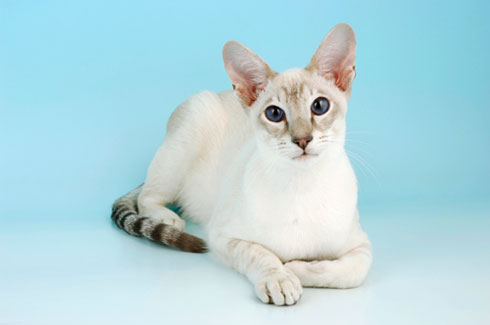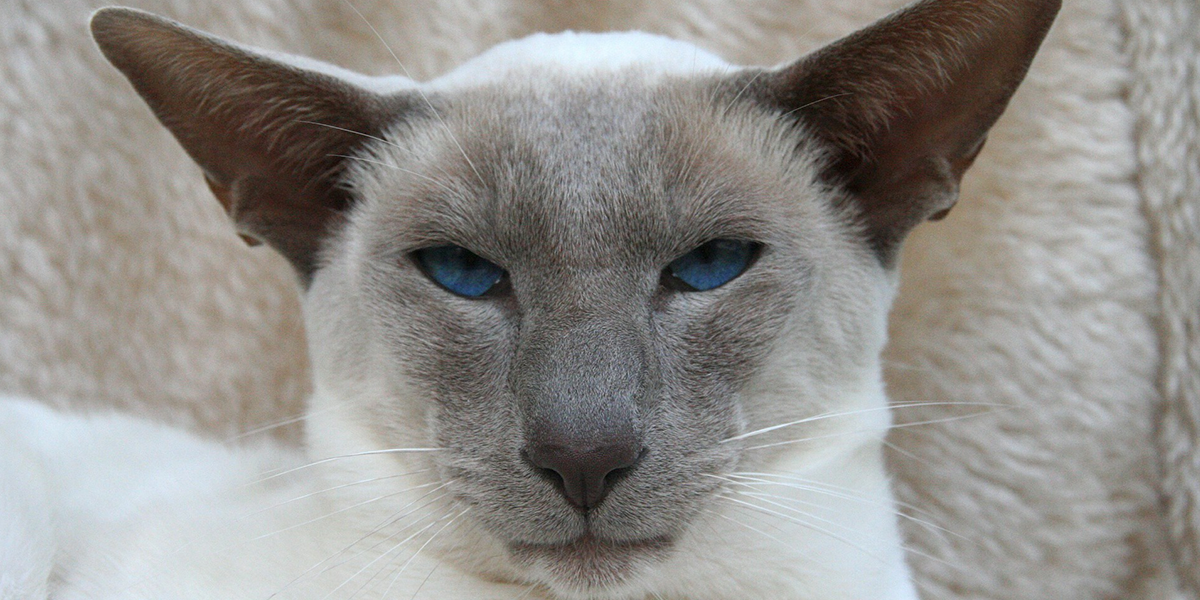The Siamese is a medium-sized cat with a long, lithe body and a short coat. The coloured points only extend to the mask area of the face, ears, legs and tail which are the cooler parts of the body. It comes is a wide range of colours. The eye colour in all coat colours and patterns will be a vivid intense blue. The breed is usually outgoing, often demanding and extrovert and can be extremely noisy.

Health and welfare issues
The original Siamese had eye squints and tail kinks which are now considered serious faults. There are, however, a number of conditions that are linked to the breed. Some lines may be predisposed to some cancers such as mediastinal lymphoma and some intestinal tumours (click here for more information on small intestinal adenocarcinoma). Siamese do also seem to suffer more from chronic coughing (asthma) and to vomit more than other breeds. Some lines of Siamese will ingest strange non-edible items (this is known as pica) such as eating woollen garments, plastic and other materials – the reason for this is not understood. Progressive retinal atrophy (PRA) has also been identified in the breed and the Siamese may be predisposed to hip dysplasia. Lysosomal storage diseases such as Niemann-Pick disease, mucopolysaccharidosis and gangliosidosis (GM1) have been described in Siamese cats, as has systemic amyloidosis.
Important
We have limited the information about inherited disorders to those conditions that are known and proven to exist within a breed. For many breeders and many conditions, insufficient information may be available at this time to know whether any particular breed is necessarily free of any particular condition.
In general, pedigree breeds use a much smaller gene pool for breeding than domestic cats and therefore have a higher risk of developing inherited disorders. In addition, a number of ‘newer’ pedigree breeds are derived from mating between one or more ‘older’ breeds, and in these situations perpetuation of inherited problems that were seen in older breeds is likely within the newer breeds.
Thank you for visiting our website, we hope you have found our information useful.
All our advice is freely accessible to everyone, wherever you are in the world. However, as a charity, we need your support to enable us to keep delivering high quality and up to date information for everyone. Please consider making a contribution, big or small, to keep our content free, accurate and relevant.
Support International Cat Care from as little £3
Thank you.
Donate Now


